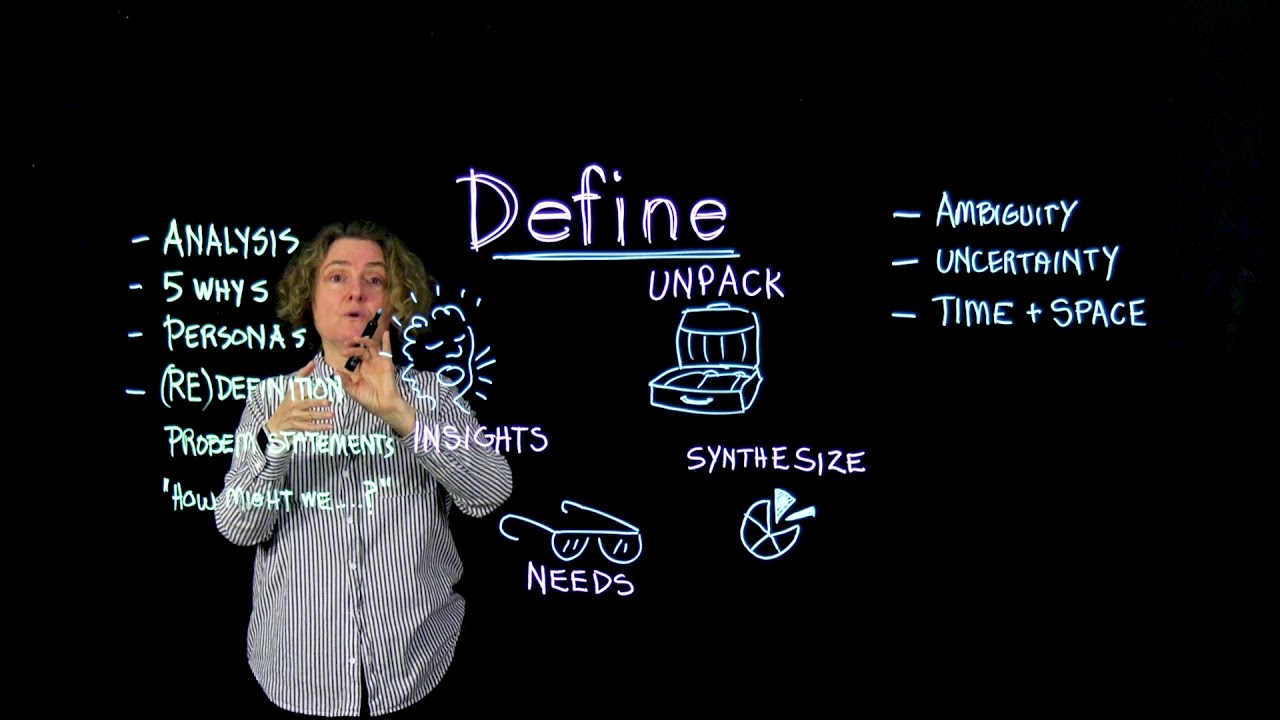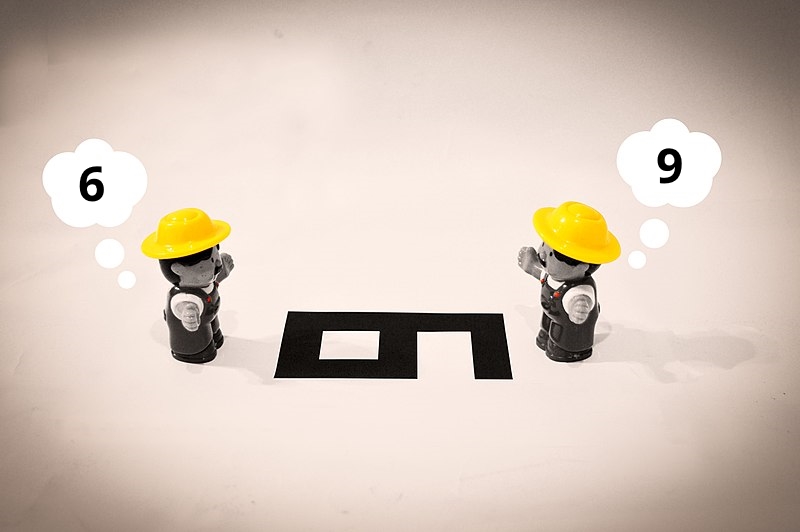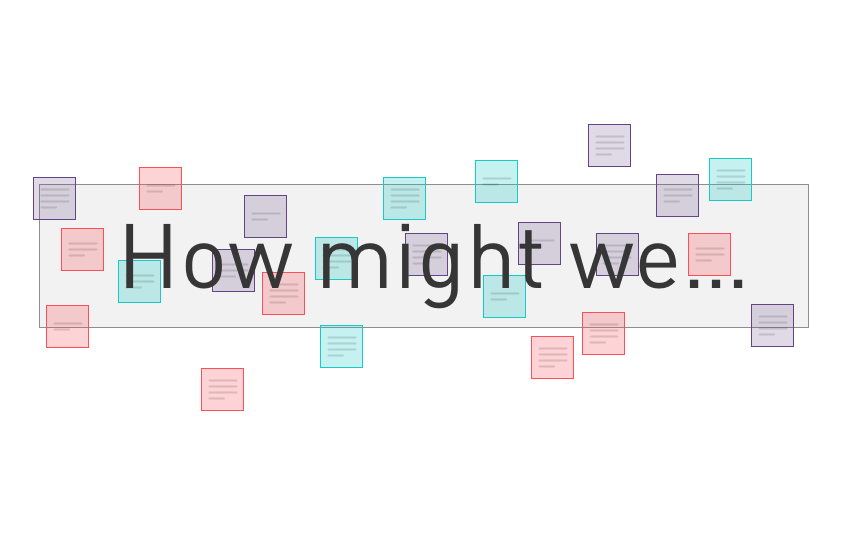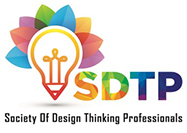“Define what the product will do before you design how the product will do it.” – Alan Cooper, About face: The Essentials of Interaction Design”
When a design thinker focuses on solving a problem by giving it an actionable and meaningful statement, it is known as Defining the problem in Design Thinking. This is likely the most difficult element of the Design Thinking process, because defining an issue (also known as a design challenge) will need you to synthesize the insights about the users from the Empathize stage of the Design Thinking process.
Once you get your head around the concept of defining a problem, a design challenge, or a problem statement, it will help you enhance your Design Thinking model. This helps to glue everyone to the same goal. This step also aids in the most useful definition of the problem: it should be wide but not too obscure, and narrow but not too restrictive.
What is the Define Stage?

It is the process to unpack the empathy done, and synthesize your observations into compelling needs, scope, and insights for a meaningful challenge. It’s more of a “focus” mode than a “flaring” mode. The define mode has two goals: to gain a thorough understanding of your users and the design space, and to come up with an actionable problem statement: your point of view, based on that understanding. Your point of view should be a guiding statement that focuses on specific consumers, as well as the insights and needs that you discovered when empathizing.
It’s helpful to grasp the relationship between analysis and synthesis before diving into what constitutes an excellent issue statement. In his book Change by Design: How Design Thinking Transforms Organizations and Inspires Innovation, Tim Brown, CEO of the international design consultancy IDEO, wrote that analysis and synthesis are “equally critical, and both have their own way of creating options and making choices.”
The analysis is all about breaking and dividing the complex situations and principles into smaller, and easy to interpret parts. For example, during the Empathize stage of the Design Thinking process, when we observe and document details about our users, we do just that. However, synthesis helps to complete the puzzle in a creative way to produce completely new concepts. This occurs at the Define stage, when we organize, interpret, and make meaning of the information we’ve received in order to formulate a problem statement.
Although analysis and synthesis take place throughout the Empathize and Define stages of Design Thinking, they do not occur only during those periods. Actually, analysis and synthesis have a tendency to occur hand-in-hand throughout the Design Thinking process. Design thinkers frequently analyze a problem before synthesizing new insights, then re-analyze their synthesized results to produce more complex syntheses.
What Are The Questions In The Define Stage?

When it is about defining a problem, it is an acquired practice to use different angles to look at the core issue. But getting into the details might entail obscurity to reach a conclusion. It is best to start with questions to give a better explanation to your problem.
Who is facing the problem?
This is the person who will be interacting with you the most. Begin by identifying your target user, their motivations and desires, and how they interact with your product. You won’t be able to add value to someone’s life unless you know who you’re attempting to help.
What is the actual problem your user is facing?
If you’re creating a car-buying platform, you might believe the issue you’re trying to solve is how to provide a wider range of car-buying possibilities. However, your primary consumer may be suffering from indecision rather than options. Examine the pain issues you discovered throughout the Empathize step and figure out what the user really needs. Then you can come up with different solutions to the problem.
Where is the problem?
This is an excellent phase since it helps you to narrow your emphasis to a single area. Alternatively, if the problem occurs in numerous locations, you’ll gain a greater understanding of the circumstances in which it must be addressed.
Why does the problem occur?
This is, without a doubt, the most important of the four essential questions. It inquires as to what it would imply to your user if the issue were to be resolved. What benefit would the user receive? How will solving the user’s problem affect the overall firm on a bigger scale?
What Are The Attributes Of A Good Problem Statement?

A problem statement guides you to focus on the definitive needs that you have discovered in the Empathy stage. It lets you cling on to the anticipation and creativity to bring new ideas to the table in the Ideation stage. A good problem statement should comprise of the following features in particular.
1. Human-centric
This is where you connect your problem statement with the specific users’ needs, and the insights you gathered from the Empathy stage. The problem statement should ultimately focus on helping the users, rather than pouring light on the technology, product specifications, or the profit.
2. Broad enough to fit in creativity
This means that the problem statement should not be too narrowly focused on a particular technique of implementing the solution. Technical requirements should not be included in the problem statement because this would limit the team’s ability to explore areas that could add unanticipated value and insight to the project.
3. Narrow enough to be manageable
The problem statement should be in the lengths and breaths of being managed easily. It should not impose its vastness, as it could scare the team to start in the first place. It should always carry sufficient constraints to process in a controlled way.
In addition to the three features listed above, beginning the problem statement with a verb, such as “Create,” “Define,” or “Adapt,” makes the problem more action-oriented.
How To Define?
When the designers begin with defining a problem, they bring all the ideas and thoughts to one place, more like creating a collage of observations, insights, thoughts, and stories. To generate a wall of information to inform the problem-defining process, the entire team covers or saturates the display with the entire data they have collected.
It will then be feasible to connect the dots between these individual elements, and build new and relevant insights that will aid in defining the problem(s) and develop more potential solutions. To put it another way, move from analysis to synthesis.
Empathy Mapping

There are four quadrants in an empathy map, which help in pondering upon the key traits demonstrated by a user during the Empathy stage. Said, Did, Thought, and Felt are the four quadrants that refer to what the users said, did, thought, and felt. It’s pretty simple to figure out what the users said and did; but, figuring out what they thought and felt requires close monitoring of how they acted and responded to various activities, ideas, and conversations (it also includes remarks on tone of the voice or the body language at the time).
Point of View

It is a substantial problem statement, that gives way to ideate the problem in a target-oriented method. By establishing the RIGHT issue to address in the brainstorming sessions, your POV captures your design vision. Reframing a design challenge into an actionable problem statement is what a POV is all about.
You create a POV by combining your understanding of the user you’re designing for, his or her needs, and the insights you’ve gained from your research or Empathize mode. Your point of view should be a concrete problem statement that guides the remainder of your design effort. By combining these three parts – user, need, and insight – you may express a point of view.
“How Might We” Questions

Once you have gathered your POV statement, you can look at design options for solving the user’s problem. Examine your point of view statement and come up with a list of subjects that are related to the situation. Then add “How might we…” before those subtopics and issues to convert them into a question. Using the preceding POV statement as an example, a few “How might we” questions could be:
- How might we engage the youth with relevant content?
- How might we make e-books available to help the newbies?
- How might we introduce new concepts without making them a boring topic?
These HMW questions can go further up to the Ideation stage, where you get to explore the ideas to provide an innovative twist to your design challenge.
Why-How Ladder

This method is used to identify a wide range of user requirements and the activities that can be taken to achieve those requirements. The ladder starts with a fundamental inquiry, then asks why numerous times until a more abstract statement emerges, accompanied by the user’s primary feelings.
Then, working backwards from that abstract assertion, ask “how” about each statement. You should end up with a hierarchy of your users’ wants that will aid you in formulating a variety of answers.
Unpack The Collected Stories

When you unpack the stories you collected, you will be able to determine which options are more viable to your users and which can result in procuring discomfort for them. This will help you come up with a brand new formula to create a generic solution.
If you have an idea that the users will not be interested in reading lengthy e-books, then you can come up with an alternative solution, like creating video content for them to spark interest in the subject. You can grab the opportunity when you see it, with the help of visualizing a story map.
Conclusion
To describe the design complexities and challenges, data from the observation stage (first step called Empathize) is gathered. We’ll be able to build an actionable design issue statement or Point of View that inspires the generation of ideas to address it by employing methods for synthesizing raw data into a meaningful and usable body of knowledge, such as empathy mapping and space saturation and group. The How Might We questions lead to Ideation sessions, in which you explore ideas that could help you address your design problem in a dynamic way.
If you wish to learn everything about Design Thinking, then these links will help you find relevance.
https://www.amazon.in/Thinking-Playbook-Practitioners-Professionals-Publication/dp/1636333745/ref=sr_1_5?crid=1Z3X1ZYMG86J8&keywords=design+thinking+playbook&qid=1641439525&sprefix=design+thinking+playbook%2Caps%2C199&sr=8-5
https://notionpress.com/read/design-thinking-playbook-for-practitioners
Quote Source: https://www.realthread.com/blog/51-design-and-creativity-quotes-guaranteed-to-inspire
Image Source:
https://blog.intercomassets.com/blog/wp-content/uploads/2021/01/How-to-write-a-great-problem-statement.jpg.optimal.jpg
https://www.flywheelstrategic.com/images/default-source/blog-images/strategy-starts-with-asking-the-right-questionsd8669bd3-03da-41c4-a525-80c1feef48cf.png?sfvrsn=d1937f61_3
https://i.ytimg.com/vi/TNAdanuvwtc/maxresdefault.jpg
https://www.innovationtraining.org/wp-content/uploads/2020/02/Steps-to-Design-Thinking.jpeg
https://upload.wikimedia.org/wikipedia/commons/e/e5/Point_of_view_bias.jpg
https://ux247.com/wp-content/uploads/2019/06/empathy-mapping-1024×600.png
http://newdesignmethod.blogspot.com/2012/04/b9934008howwhy-laddering.html
https://miro.medium.com/max/1000/1*SpGAbiDQCPTOPKRorm-N6w.jpeg
Written by: Jimmy Jain & Afreen Fatima
Society of Design Thinking Professionals









